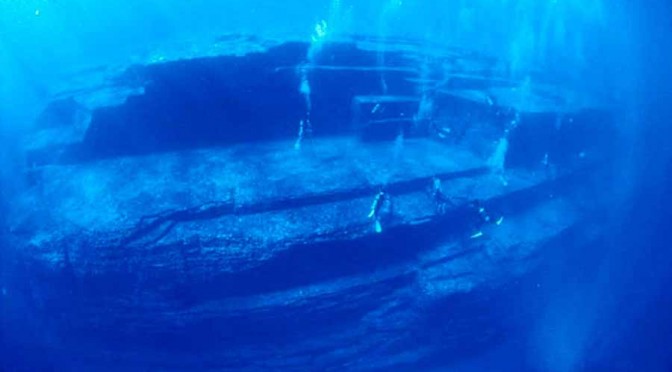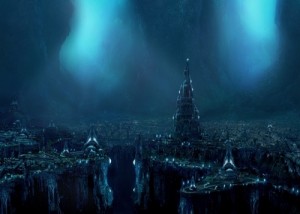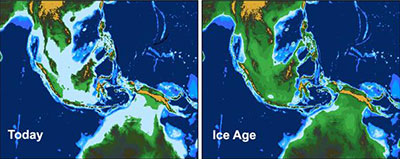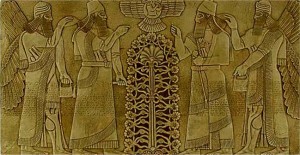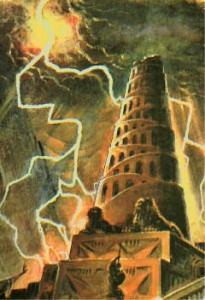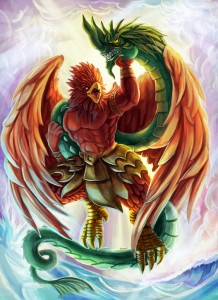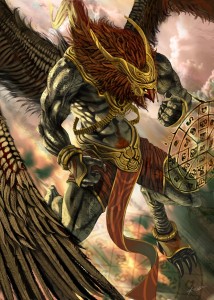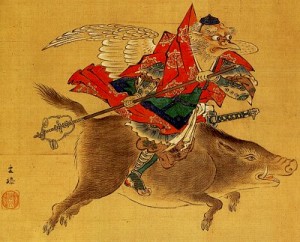(I hate that I have to say this, but this is a fictional account of the history of a fictional world. I do not believe these things, nor should you, as I am making them up. If I receive any comments that I did not do my research into these events, you will be mocked.)
In the Agent of Argyre series of books, there is an organization called the Alter Control Task Force. Though ostensibly an organization for policing activities of the Alter race, an attempt to prevent an eventual race war, they are actually representatives of a city-state on the ocean: The Republic of Argyre.
The Republic of Argyre, an artificial island anchored to an oceanic ridge in the pacific, is a city-state established by Alters for the sake of harboring their kind and establishing a relationship with the mainstream human population. Despite being an artificial island and attached to no primary landmass, the city’s structure is capable of potentially supporting all 12 to 15 million active Alters on the planet.
How did a race of people who’ve lived in hiding for centuries manage to construct such a city? Why would they build their city in the middle of the ocean? Where did they get the resources for such a task? In the Alterpedia Historia, we will answer these questions and discover the history of the Alters. Today we address…
Finding “Mu”
Though the First Ones of the African continent and Mediterranean region were responsible for a great deal of the early history of the Alter race, especially Horus and his city-state of Atlantis, they were not the only civilization to form in the ancient past. For many millennia another branch of the homo genus underwent changes of its own, almost in parallel with their distant cousins in Africa. This group, the so-called “Hobbits” of Homo floresiensis, gave rise to many mysteries.

Distantly related to Homo sapiens, and thus to Alters, the Hobbits were a third race of hominids to achieve sentience in the ancient Earth. Defined by their short stature and roughly neanderthal-like anatomy, these people would have resembled the very halflings they were one day named after. Truthfully, they were not known as Hobbits within their own society and, while unusual for hominids, were not Alters in and of themselves. However, through them several races of Alters, separate species from those most common in human civilization, emerged and spread through the world. Among these are specimen such as the Yara-Ma-Yha-Who, Kappa, and Pixie – among the few remaining “inhuman” Alters to survive to the modern day. But, while rare today, the Hobbit civilization thrived in a place now known as…
Sundaland
From the beginning of the last great ice age until as recently as 10,000 years ago, the region today known for mostly islands off the coast of South and East Asia was connected by a continental shelf known as the Sunda shelf. This shelf, stretching from the Indonesian islands all the way up to the islands of Japan, formed a land that was present throughout the ice age and was home to the race we now refer to as the “Hobbits”. These Sundan people of the Homo floresiensis species were, while not as sophisticated as the Homo sapiens to the west, still capable of crafting tools and other indications of civilization and survived in the southern Sunda region up to as recently as 12,000 years ago, before the shelf submerged beneath the waves.
This society was a simple and primitive one for the majority of time these people existed. And with ancient humans beginning to migrate in from the west, the Hobbit race began to fade – faced with somewhat physically and, eventually, mentally superior competition. However, as the Homo floresiensis species began to decline, their descendants diversified into strange and colorful creatures – some of whom having an intelligence to match their distant relatives in the West. It was through this mix of ancient humans and the remnants of Hobbit-kind that the first of several civilizations to be associated with “Mu” came to rise.
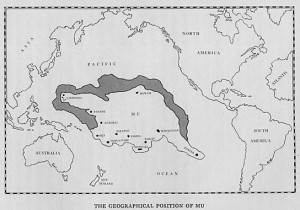
This early civilization was heavily invested in hunting and gathering from the rainforests of the region. With access to multiple river deltas and swampland, it was also a good location for fishing and certain species descended from the Hobbits (particularly the Kappa) were quite adept at this task – making the humans of the era quite accepting of their small swimming friends. By the time the shallow parts of the Asian continental shelf flooded and Sundaland was submerged into the sea, the civilization had developed to a point that they were constructing buildings which could withstand the onslaught of the sea and leave behind ruins for future generations to discover on the seafloor – such as those found off the coast of Yonaguni, Japan.
However, despite their growing sophistication, this ancient civilization was unable to cope with their homeland being submerged in the ocean and was soon scattered, fragments of their society escaping to the highlands – mountains which would soon become the islands known of today. Some, however, began to scatter further inland. These movements have resulted in conflicting theories on the migrations of humanity through the Asian continent, theories which are still being debated into the modern day. However, for one society, the movements of the people in the east began a quest that would last for generations.
Anunnaki Migration
With the fall of Atlantis to the west, the surviving Atlanteans split into three independent factions encircling the Mediterranean Sea. The old guard of Atlantis moved into Europe, establishing themselves on Olympus and preparing for war. The followers of the Mes Horii, meanwhile, returned to their ancestral homeland in Egypt, making due with the desert environment they were faced with and trying to prevent the Olympians from carrying out their goals of conquest. But many survivors, seeing the conflict and war taking place, and feeling unwelcome among the humans in the region, began to migrate into the Asian continent to the east.
Before long, one group of these nomads settled in Mesopotamia, calling themselves the Anunnaki and being seen by the local populations (unaware of their Atlantean origins) as gods. The Anunnaki, like the Olympians, decided to encourage this perception and began to influence the shaping of early cultures in the region. It was their hope that, even if Atlantis was gone, the advancements they had over the other people of the world at the time could be used to establish a new homeland in the fertile crescent. Teaching the locals much of things such as agriculture and irrigation, the Anunnaki began the ancient humans on a path to establishing the first recorded civilizations – civilizations they wished to keep as far from the conflict to the west as they could.
However, this was not meant to be. As the war between the old factions of Atlantis broke out, it soon found its way into the east. These ancient conflicts, while still somewhat distant for the Anunnaki, made the group nervous about the possibility that they could soon be forced to choose a side. Given the fate that befell Prometheus, no one within the Anunnaki wanted to face this possibility. A decision had to be made: join the war, or distance themselves from their past.
It was during this time that one Anunnaki noble discovered something they hadn’t known before. Recent sightings had been made of small, shimmering creatures which appeared human but moved like birds. Pixies, evolved from the Hobbits, had been forced out of their habitat in many places by the flooding and were now spreading across Eurasia. Intolerant of cold weather, but requiring lush surroundings to support their metabolism, the migration of Pixies was dramatic and forced them across the continent – avoiding extreme cold or desert environments, eventually reaching from the far east (where they were known as “Mogwai”) all the way to Europe.

Seeking out the rumors of these creatures, the Anunnaki noble discovered a traveler who knew how to capture one and held several in small cages constructed out of bamboo. This traveler offered to trade the Pixies for supplies, but the noble was now far more interested in the traveler themselves. Offering the supplies they wanted for information on the strange cages and how they knew of the little creatures, the noble soon found out about a distant land to the east which may solve their problems.
Word of this distant land of fairies, where human and Alter lived in harmony, spread among the Anunnaki and inspired many within the group to decide that their best hope of escaping the conflict to the west was to find this distant land and settle there. Though not all joined the migration, a great many began a long journey into the east in search of this presumed promised land.
The Divide
The migration east was not an easy journey. With multiple mountain ranges, dense forests, and extreme climates between them and the so-called promised land, many members of the party debated whether the journey was worth it. Though the traveler’s tales had given them a general direction to search, maps were not an accurate skill at the time and no one really knew exactly where they were going. Progress was not steady, either, with many of their supplies being what could be grown with archaic agricultural techniques and few methods of preservation available to them. As a result, the party’s progress was punctuated with stops to deal with sudden changes in climate, dwindling supplies, or simply getting lost.
With each prolonged stop, members of the party began to settle along the way, deciding the regions they were in were good enough. But the leadership refused to simply settle, convinced that the land in the east was where they were meant to be and that the Pixies were a sign of their destiny. However, as their near aimless journey continued and they explored the continent, the fragmentation was changing their people and the makeup of the party as a whole.
Due to the rapid adaptations of Alters across generations, the splintering of the group gave rise to dramatically different races such as the Vanara, Naga, Garuda, and Yeti that spread across the region the travelers passed through. And, by the time the final group had arrived to the far east they sought out, several familiar races were well on their way to becoming the likes of the Jiangshi, Kitsune, and Tengu.
But, despite their efforts, the last of the Anunnaki traveling across the continent made a horrible discovery as they reached the distant shores of Asia. For all the time they spent traveling and the hardships they endured to make the journey, it was all for naught. The land they had been searching for, the place where Alters and Humans lived in peace, had been washed away for generations – now only legend even among the descendants.
The followers were rightfully pissed, and leadership was soon passed to a member of the newly forming Kitsune race: a young, intelligent girl named Inari.
While several members of the party wished to turn back, Inari was not convinced. Establishing a relationship with several of the races that had originated in the area, especially the Kappa that told them the layout of the island chains, she began to plan for a new Atlantis to the east. Though the urge to turn back was strong, Inari convinced them that they could make a new home in this land. Gathering the craftsmen together, she began the construction of a ship to search for the new home among the islands, like the home their ancestors once had.
It is because of this that Inari eventually became a prominent figure in eastern mythology – a patron of warriors, craftsmen, agriculture and industry. Her efforts to restore civilization began a new era of discovery and craftsmanship to the far east – a tradition they held onto long after she was gone and her new civilization faded into obscurity. Millennia later, as the stories of her continued to circulate, she would eventually be worshiped in the east for her contribution to the foundations of eastern civilization. To this day, thousands of Shinto shrines are devoted to her and the Kitsune.
And as for what became of Inari’s people? That’s a story for another time.
(I write novels. Fantasy, sci-fi, alternative history: I do it all! And if you want more odd and useless information from my fictional world, be sure to check my twitter account.)


